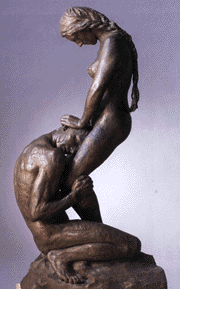Gustav Vigeland (1869 – 1943)
Get a Gustav Vigeland (1869 – 1943) Certificate of Authenticity for your painting (COA) for your Gustav Vigeland (1869 – 1943) drawing.
For all your Gustav Vigeland (1869 – 1943) artworks you need a Certificate of Authenticity (COA) in order to sell, to insure or to donate for a tax deduction.
Getting a Gustav Vigeland (1869 – 1943) Certificate of Authenticity (COA) is easy. Just send us photos and dimensions and tell us what you know about the origin or history of your Gustav Vigeland (1869 – 1943) painting or drawing.
If you want to sell your Gustav Vigeland (1869 – 1943) painting or drawing use our selling services. We offer Gustav Vigeland (1869 – 1943) selling help, selling advice, private treaty sales and full brokerage.
We have been authenticating Gustav Vigeland (1869 – 1943) and issuing certificates of authenticity since 2002. We are recognized Gustav Vigeland (1869 – 1943) experts and Gustav Vigeland (1869 – 1943) certified appraisers. We issue COAs and appraisals for all Gustav Vigeland (1869 – 1943) artworks.
Our Gustav Vigeland (1869 – 1943) paintings and drawings authentications are accepted and respected worldwide.
Each COA is backed by in-depth research and analysis authentication reports.
The Gustav Vigeland (1869 – 1943) certificates of authenticity we issue are based on solid, reliable and fully referenced art investigations, authentication research, analytical work and forensic studies.
We are available to examine your Gustav Vigeland (1869 – 1943) painting or drawing anywhere in the world.
You will generally receive your certificates of authenticity and authentication report within two weeks. Some complicated cases with difficult to research Gustav Vigeland (1869 – 1943) paintings or drawings take longer.
Our clients include Gustav Vigeland (1869 – 1943) collectors, investors, tax authorities, insurance adjusters, appraisers, valuers, auctioneers, Federal agencies and many law firms.
Do you think you may own a sculpture by Gustav Vigeland? We perform art art authentications, art appraisals, art research and provide Certificates of Authenticity (COA) as well as consultations, for all paintings by Gustav Vigeland.

Gustav Vigeland was a Norwegian sculptor. He was born on the farm Vigeland in Mandal, a small coastal town in the south of Norway, to a family of craftsmen and countrymen. As a youth, he was sent to Oslo where he learned to read and carve wood at a local school. However, the sudden death of his father compelled him to move back to Mandal to help his family.
He returned to Oslo in 1888, this time determined to become a professional sculptor. Vigeland came to the attention of sculptor Bryunjulf Bergslien, who supported him and gave him practical training. The following year he exposed his first work, Hagar and Ishmael.
Vigeland spent the years from 1891 to 1896 in several voyages abroad, including Copenhagen, Paris, Berlin and Florence. In the French capital he frequented Auguste Rodin’s workshop, while in Italy he experimented with ancient and Renaissance artworks. In these years the themes that would later dominate his inspiration: the death and the relationship between man and woman first appeared. He held his first personal exhibitions in Norway in 1894 and 1896, which received notable critical praise.
Until 1902 Vigeland was engaged in the restoration of the Nidaros Cathedral in Trondheim. The contact with Mediaeval art contributed to another frequent theme in Vigeland’s art, the dragon as symbol of sin but also as a nature force, fighting against man.
Back in Oslo, he obtained from the town an abandoned studio in which to work. In 1905 Norway became independent from Sweden: Vigeland, considered the most talented Norwegian sculptor, received numerous commissions for statues and busts celebrating renowned compatriots like Henrik Ibsen and Niels Henrik Abel.
In 1906 Vigeland proposed a chalk model for a monumental fountain which, according to the initial will of the Oslo commune, had to decorate the square in front of the National Parliament. His work was generally welcomed, but the location created a disputed: the work completion was therefore postponed. In the meantime Vigeland enlarged the original project, adding several sculpture groups and, in 1919, a high granite column.
In 1921 the City of Oslo decided to demolish the house where Vigeland lived, and build a library. After a long dispute, Vigeland was granted a new building from the city, where he could work and live: in exchange, he promised to donate to the city all his subsequent works, including sculptures, drawings, engravings and models.
Vigeland moved to his new studio in Kirkeveien in 1924. It was located in the vicinity of Frogner Park, which he had chosen as the definitive location for his fountain. In the following twenty years Vigeland was devoted to the project of an open exhibition of his works, which later turned into what is universally known as Vigeland Park.
Vigeland lived and worked in Kirkeveien until his death in 1943. His ashes are still preserved there, in the belfry. According to the agreement with the city of Oslo, the building became the Vigeland Museum, and houses various works by the artist, along with the plaster models of the Vigeland Par sculptures. 360° Vigeland Park
